 TENTH EDITION Elements ofArgumentA Text and ReaderAnnette T. RottenbergDonna Haisty Winchell Clemson University Bedford / St. Martin's Boston New York 00_ROT_64699_FM_i_xxxii.indd i Achorn International 06/18/2011 12:54AM For Bedford /St. MartinsExecutive Editor: John E. Sullivan III Production Editor: Kerri A. Cardone Senior Production Supervisor: Jennifer Peterson Senior Marketing Manager: Molly Parke Editorial Assistant: Alyssa Demirjian Copyeditor: Helen van Loon Indexer: Steve Csipke Permissions Manager: Kalina K.
TENTH EDITION Elements ofArgumentA Text and ReaderAnnette T. RottenbergDonna Haisty Winchell Clemson University Bedford / St. Martin's Boston New York 00_ROT_64699_FM_i_xxxii.indd i Achorn International 06/18/2011 12:54AM For Bedford /St. MartinsExecutive Editor: John E. Sullivan III Production Editor: Kerri A. Cardone Senior Production Supervisor: Jennifer Peterson Senior Marketing Manager: Molly Parke Editorial Assistant: Alyssa Demirjian Copyeditor: Helen van Loon Indexer: Steve Csipke Permissions Manager: Kalina K.
Ingham Senior Art Director: Anna Palchik Text Design: Glenna Collett Cover Design: Donna Lee Dennison Cover Photo: Courtesy of Veer Composition: Achorn International, Inc. Printing and Binding: RR Donnelley and Sons President: Joan E. Feinberg Editorial Director: Denise B. Wydra Editor in Chief: Karen S. Henry Director of Marketing: Karen R. Soeltz Director of Production: Susan W.
Brown Associate Director, Editorial Production: Elise S. Kaiser Managing Editor: Elizabeth M. Schaaf Library of Congress Control Number: 2011927764 Copyright 2012, 2009, 2006, 2003 by Bedford/St. Martins All rights reserved. No part of this book may be reproduced, stored in a retrieval system, or transmitted in any form or by any means, electronic, mechanical, photocopying, recording, or otherwise, except as may be expressly permitted by the applicable copyright statutes or in writing by the Publisher. 6 5 4 3 2 1 f e d c b a For information, write: Bedford/St. 6 5 4 3 2 1 f e d c b a For information, write: Bedford/St.
Martins, 75 Arlington Street, Boston, MA 02116 (617-399-4000) ISBN-13: 9780312646998 AcknowledgmentsAcknowledgments and copyrights appear at the back of the book on pages 82529, which constitutean extension of the copyright page. It is a violation of the law to reproduce these selections by anymeans whatsoever without the written permission of the copyright holder. 00_ROT_64699_FM_i_xxxii.indd ii Achorn International 06/18/2011 12:54AM 00_ROT_64699_FM_i_xxxii.indd iii Achorn International 06/18/2011 12:54AM Purpose Where do our students some of our youngest voters and our future leaders get their take on current events? Where do they get their news? Probably not from sitting down and watching network broadcasts or listening to the radio like their parents and grandparents did. Probably not from reading a newspaper regularly either. More likely they get it from a computer or a cell phone, which means they get it in bits and pieces, and on the run. Where do they read or hear arguments? Again, probably in short digital bursts. Their idea of debate may come from the most recent presidential debates.
More likely, it comes from com ments made online in response to YouTube videos or Facebook postings. They may get todays political news from Jon Stewart or Glenn Beck, from the cover of Time or Newsweek, or from skits on Saturday Night Live. Their most consistent source of headlines may be cnn.com, fox.com, or Twitter. In order to get our students to really think about argument, we have to get them to slow down and practice the art of critical reading and listening. We have to get them to analyze sustained argumentative discourse, and we have to give them a vocabulary to be able to talk about it. The vocabulary we use in Elements of Argument is primarily that of Stephen Toulmin, whose model of argu ment is based on three principal elements: claim, support, and warrant.
These three elements answer the questions What are you trying to prove? What have you got to go on? and How did you get from evidence to claim? These questions are precisely the ones that students must ask and answer in analyzing arguments. We also have to get our students to write sustained argumentative discourse. They have to learn to apply their knowledge of claim, support, and warrant. They have to understand that successful arguments require a blend of logos, pathos, and ethos. Logic is not always enough; it must usually be used in conjunc tion with legitimate appeal to emotion, and it must come from a trusted speaker or writer. In addition to grounding our text in Toulmins model of argumenta tion, we also introduce students to the basics of Aristotles classical theories of rhetoric and to Carl Rogerss theories of nonconfrontational communication.
We stress the significance of audience as a practical matter. In the rhetorical or audience-centered approach to argument, to which we subscribe in this text, success is defined as acceptance of the claim by an audience. Arguers in the real world recognize intuitively that their primary goal is not to demonstrate the purity of their logic, but to win the adherence of their audiences. iii 00_ROT_64699_FM_i_xxxii.indd ii Achorn International 06/18/2011 12:54AM 00_ROT_64699_FM_i_xxxii.indd iii Achorn International 06/18/2011 12:54AM iv preface To do so, students must read critically and reflect on what others have to say. The Internet has redefined what research means to our students. A large part of the challenge now is not to find sources but to eliminate the thousands of questionable ones.
Faced with the temptation to cut and paste instead of read and understand, students need more help than ever with accurate and fair use of sources. We provide that help in the context of an increasingly digital world. Organization Part One of Elements of Argument introduces Aristotelian, Rogerian, and Toulmin approaches to argumentation, then critical reading and analytical writing. It is rich in readings that support these approaches. Part Two devotes one chapter apiece to definition and to the chief elements of argument claim, support, and warrant. The examples are drawn from both print and online sources essays, articles, speeches, blogs, cartoons, and adver tisements.
Chapter 8 teaches students to identify and avoid errors in logic, and Chapter 9 deals with the power of word choice in arguing effectively. Each chap ter in this section includes examples, readings, discussion questions, and writ ing suggestions, as well as a selection of readings for analysis and a debate that shows contrasting perspectives on the same controversial issue. Part Three takes up the process of researching, writing, and presenting argu ments. Chapter 10 focuses on planning and research. Chapter 11 covers writing and documentation and provides two sample research papers, one employing the Modern Language Association (MLA) documentation system and the other employing the American Psychological Association (APA) documentation style. Chapter 13 provides guidelines for presenting arguments orally.
Part Four, Multiple Viewpoints, presents arguers in action. Each of the eight chapters in this part includes six to eight readings on a single controversial issue, presenting that issue from a range of perspectives. The topics are ones now in the news and on engaged citizens minds: body image, academic integrity, sex and violence in popular culture, freedom of speech, and medical ethics. Part Five, Classic Arguments, has been restored in this edition, and it includes such class-tested arguments as Swifts A Modest Proposal and Orwells Politics and the English Language. New to This Edition As is the case with each edition of Elements of Argument, we have updated read ings throughout to keep information current and subjects interesting. In this tenth edition, over half of the readings are new.
Three new Debates examine derogatory use of the word retard, the environmental costs of recycling plas tic, and the social responsibility of business. Three of the Multiple Viewpoints topics are also new; they explore how social networking affects human interac tions, the ethics of food production, and how biases shape the news. We are pleased to offer students more support in researching and document ing research than we have in any previous edition. The research paper in MLA 00_ROT_64699_FM_i_xxxii.indd iv Achorn International 06/18/2011 12:54AM 00_ROT_64699_FM_i_xxxii.indd v Achorn International 06/18/2011 12:54AM preface v style, on competitive foods and obesity, is new to this edition, and in Chapters 10 and 11 students will be able to follow its author through the research process as she responds to an assignment, and researches, writes, and revises her paper, providing a real-world model of the research process. Chapters 1 through 9 now end with a Research Readiness exercise that prepares students for investigat ing and documenting an independent research topic, helping them practice skills such as narrowing down a list of possible digital sources or writing a sum mary. Additional sentence templates in Chapter 3 help students understand the effective use of summary and response in argument.
Next page


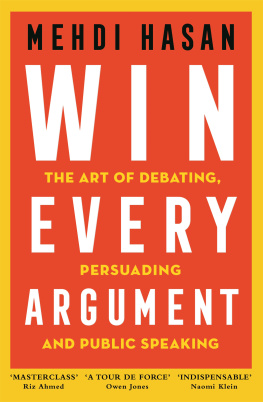
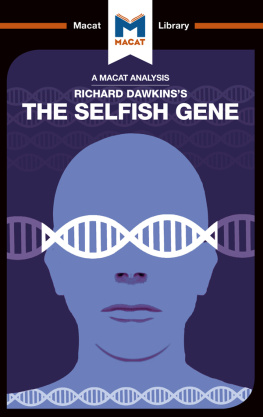
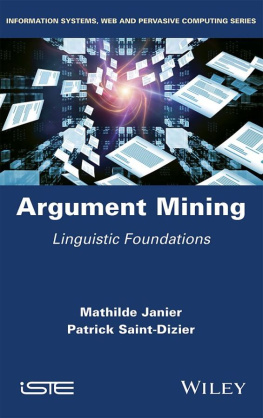
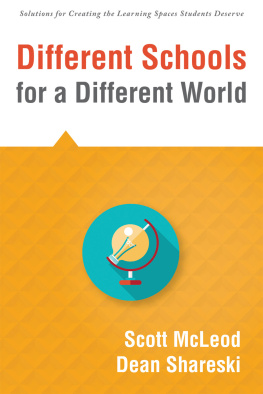
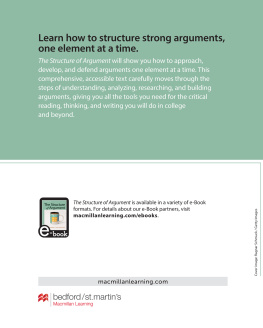
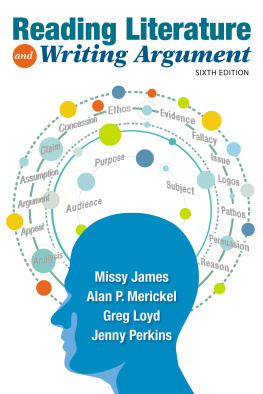
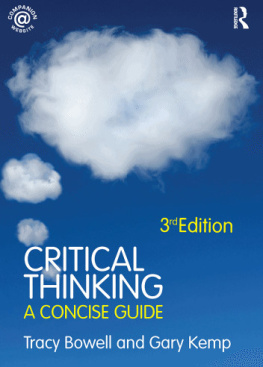
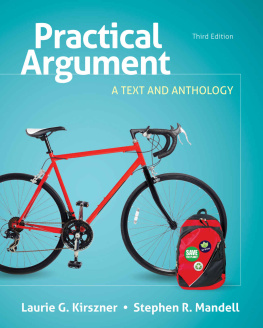
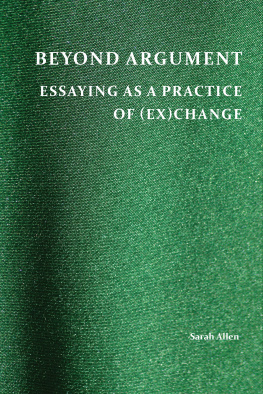
 TENTH EDITION Elements ofArgumentA Text and ReaderAnnette T. RottenbergDonna Haisty Winchell Clemson University Bedford / St. Martin's Boston New York 00_ROT_64699_FM_i_xxxii.indd i Achorn International 06/18/2011 12:54AM For Bedford /St. MartinsExecutive Editor: John E. Sullivan III Production Editor: Kerri A. Cardone Senior Production Supervisor: Jennifer Peterson Senior Marketing Manager: Molly Parke Editorial Assistant: Alyssa Demirjian Copyeditor: Helen van Loon Indexer: Steve Csipke Permissions Manager: Kalina K.
TENTH EDITION Elements ofArgumentA Text and ReaderAnnette T. RottenbergDonna Haisty Winchell Clemson University Bedford / St. Martin's Boston New York 00_ROT_64699_FM_i_xxxii.indd i Achorn International 06/18/2011 12:54AM For Bedford /St. MartinsExecutive Editor: John E. Sullivan III Production Editor: Kerri A. Cardone Senior Production Supervisor: Jennifer Peterson Senior Marketing Manager: Molly Parke Editorial Assistant: Alyssa Demirjian Copyeditor: Helen van Loon Indexer: Steve Csipke Permissions Manager: Kalina K.